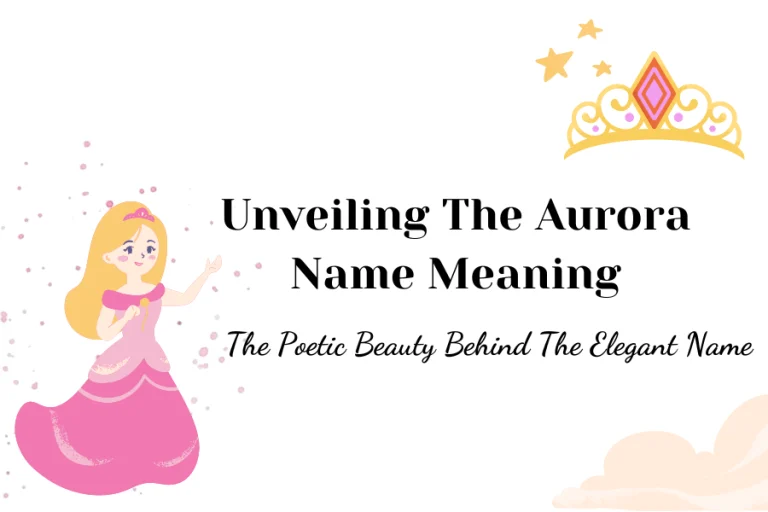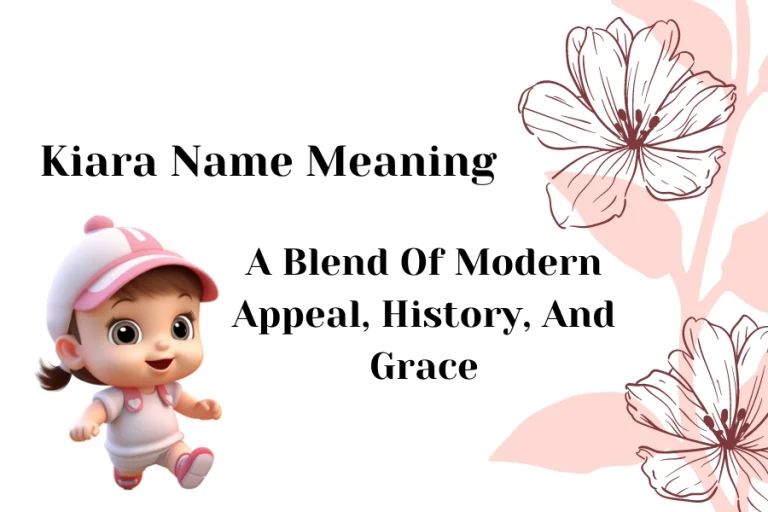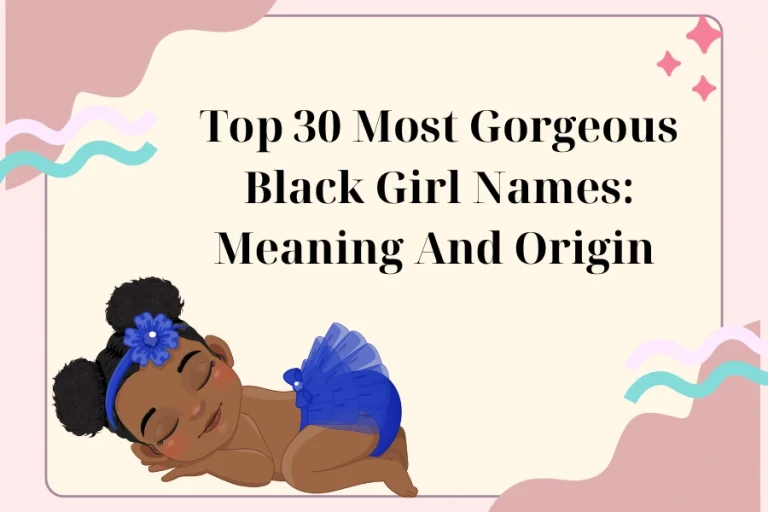
Demon girls are dark figures who feature in films and novels, frequently with evil and terrible implications. Thus female demon names are usually avoided when naming baby daughters to avoid unfavorable or unlucky associations.
However, only some recognize the names of female demons. So, here are 15 common female demon names you should avoid when naming.
Why Should We Avoid Giving Female Demon Names To Children?
Naming a child is very important because the name is not only a way of calling but can also affect many aspects of the child’s life. Giving your daughter a name similar to a female devil can cause some negative effects such as:
Causing cultural or religious misunderstanding
Female demons are seen as unlucky or bad in many cultures. If you give your child these names, it can lead to discrimination or teasing from friends, teachers, and people around. Additionally, naming a child after a female devil may be offensive or disrespectful in certain religions and beliefs.
Creating negative associations
Demon girls are villains, often with evil and cruel personalities. Naming your child after a female demon might lead to undesirable associations and influence how other people perceive and interact with your child. Furthermore, names associated with female demons may have an impact on kids’ social lives, careers, and future relationships.

Female Demon Names: Meaning And Origin
When talking about demons, we often think of male demons with scary shapes and long horns or sharp fangs. However, there are not only male demons but also many female demons with diverse shapes and personalities. The following seemingly “gentle” names are the names of famous female devils:
Abyzou – one of the most famous female demon names
Abyzou is a female evil originating from ancient Middle Eastern and Jewish mythology. The name is derived from the ancient Greek word “abyssos”, meaning bottomless abyss or cave. The name Abyzou is intended to imply that this is a female demon deep in the darkness of sin.
Abyzou was infertile, so she became jealous of human mothers. Therefore, she is believed to be the cause of miscarriages, stillbirths, or infant deaths. Abyzou’s physical description will vary in different texts or myths. However, she has always been considered an evil force that targets pregnant women and newborns.
Agrat bat Mahlat – one of the famous Jewish demon queens
Agrat bat Mahlat is one of the four well-known demon queens in Jewish demonology, along with Lilith, Naamah, and Eisheth Zenunim. Agrat bat Mahlat is translated as “Agrat, daughter of Mahlat” which honors her illustrious ancestry.
This is a female demon associated with sex, often seducing men and causing night terrors, similar to the Succubus. In esoteric literature like the Kabbalah, Agrat bat Mahlat is depicted as a queen riding a chariot and commanding legions of evil spirits. This demonstrates her dominance and strength in the shadowy world.
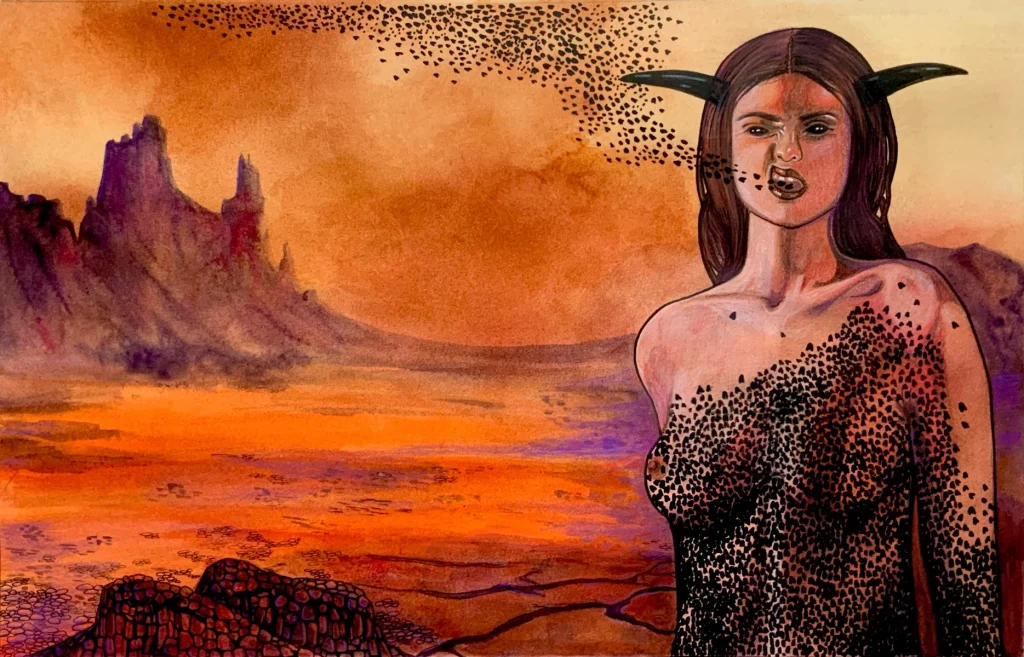
Alecto – a female demon who specializes in revenge
When mentioning the famous Furies (gods of revenge) in Greek mythology, it is impossible not to mention Alecto. The term is derived from the Greek word “alektos,” which signifies everlasting or unceasing. Her name is a reflection of her spiteful, unrelenting attitude.
Alecto’s role involves punishing moral crimes and inciting anger and rage in humans. She, along with her sisters Megaera and Tisiphone, are depicted as winged women, with snakes in their hair and blood flowing from their eyes.
Ajatar – an evil spirit from Finnish mythology
Because Ajatar frequently resides in dense forests, she is known as the cruel jungle devil. The name is derived from the Finnish word “ajatara”, which means noxious. Depending on the kind of esoteric writing, Ajatar’s descriptions differ greatly. Occasionally, she is referred to as a snake or dragon-like figure. She is associated with disease and poor luck, suggesting a fear of the wilderness and the dangers lurking within it.
Baba Yaga – one of the popular female demon names in Eastern Europe
Baba Yaga is a famous figure in Slavic folklore, often portrayed as a terrifying old witch. The name is a combination of the phrases Baba (grandmother or elderly woman) and Yaga (witch or terror).
Baba Yaga is an elderly woman who lives in a wooden home shaped like a hen’s leg in the deep jungle. According to fairy tales, she may use a mortar to soar through the air while holding a pestle in her right hand and a broom in her left hand. It is stated that Baba Yaga’s specialty is hunting children and kidnapping them to eat.

Lamashtu – a fearsome demoness from Mesopotamian mythology
Lamashtu, like Abyzou, is a malevolent female evil that preys on infants and expecting mothers. Although her name is of ancient Akkadian origin, its precise meaning is unknown. Lamashtu is frequently portrayed with claws that resemble birds, a lion’s head, and donkey teeth.
She is said to be the cause of miscarriages, infant deaths, and illness. The image of the female demon Lamashtu represents the fear surrounding childbirth and parenting in ancient Mesopotamian society.
Lilith – one of the most beautiful female demon names
Lilith is a well-known female evil in Jewish mythology and demonology. Her name comes from the ancient Sumerian word “lilitu”, meaning wind spirit or demoness.
According to Jewish folklore, Lilith was made from the same earth as Adam, making her the first wife of Adam. She departed the Garden of Eden and turned into a demon because she would not bow to Adam. Lilith has associations with seduction, mayhem, and injuring unborn children and expectant mothers.
Echidna – Mother of Demons
The word “ekhidna” (which means poisonous snake in Greek) is the source of the name Echidna. Echidna is depicted as a creature with a half woman and half snake, symbolizing her dual nature of beauty and animality. She is supposedly the wife of Typhon, another terrifying creature. Together, the two created many of the most terrifying creatures in Greek mythology, including the Chimera, Cerberus, and Hydra.
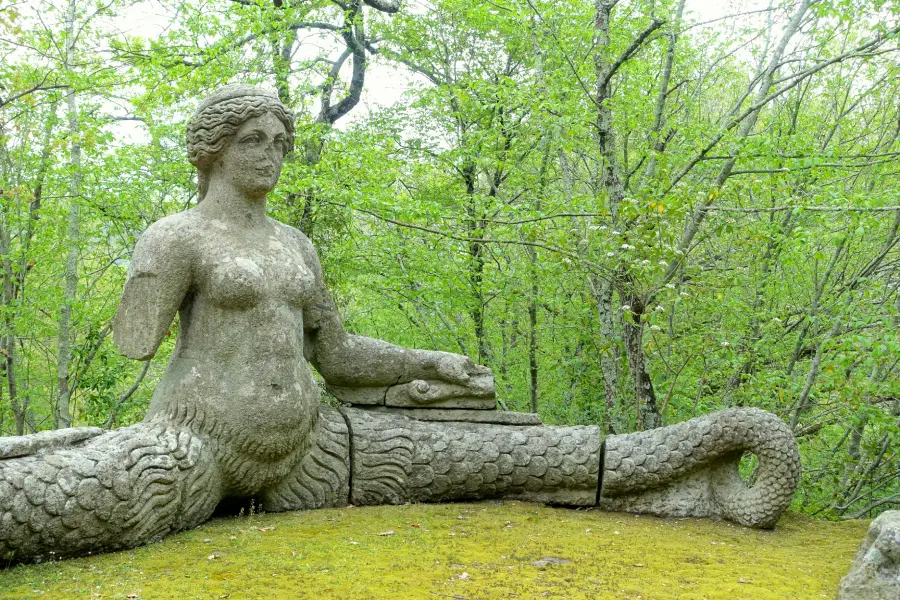
Lamia – a demon girl who was once a stunning princess
Lamia seems to be a beautiful name but it is one of the female demon names with a pitiful past. The definition of “Lamia” is thought to have originated from the Greek word “laimos,” which means throat and reflects cannibalistic behavior.
Legend has it that Lamia was once a stunning Libyan queen who had a relationship with Zeus. Hera cursed Lamia out of jealousy, resulting in the loss of her kids and transforming her into a monster that feeds on young victims.
Nocnitsa – a female evil who brings nightmares
Nocnitsa is reputed to be a demon that induces severe nightmares and paralyzes sleep. The Slavic word “noc” (black night) is the source of her name. It is stated that Nocnitsa sits on the victim’s chest, giving them a sense of suffocation and terrifying dreams. She is frequently portrayed as a menacing character who hides in the shadows and has glowing eyes.
Maleficent – Queen of Darkness on the big screen
Maleficent is most likely the first female demon that comes to mind when discussing female evils. This is a made-up antagonist from the Disney movie “Sleeping Beauty” and its motion cinema versions. This name – Maleficent comes from the English word “maleficent”, which means to do evil or cause harm.
Maleficent is a powerful sorceress with giant wings and long scary horns. After being spurned at Aurora’s baptism, she was the one who cursed Princess Aurora to die at the age of sixteen. The persona of Maleficent personifies themes of retaliation, envy, and the fallout from unbridled brutality.

Morgen – a sea witch
From Arthurian mythology, Morgen, sometimes known as Morgan le Fay, is a formidable sorceress. The Welsh word “mor” (deep sea) is connected to the name “Morgen”. Morgen is known as an evil witch who uses her voice to lure men to their deaths in Welsh mythology. It is also thought that she is the one who sinks ships while they are at sea.
Medusa – a female evil with snake hair and frozen eyes
Medusa is a character in Greek mythology famous for her scary appearance and deadly eyes. The Greek term “medein”, which means to guard, is the source of her name, implying that she was originally a protector or guardian.
Before being cursed by Athena for defiling her temple with Poseidon, Medusa was a gorgeous priestess in the goddess’ temple. Medusa’s hair twisted into snakes due to the curse, and her glance turned humans into stone. She turned into a cautionary tale about the repercussions of offending the gods and a symbol of hideous womanhood.
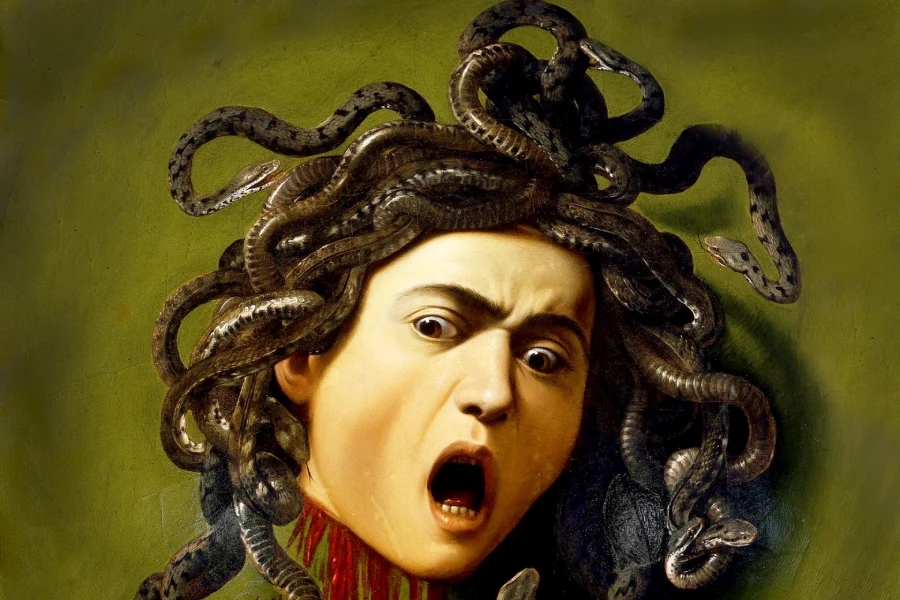
Poludnitsa – Lady Midday
Poludnitsa is one of the most well-known female demon names in Slavic mythology, especially in Eastern European folklore. In Slavic languages, this name translates as noon or midday, suggesting the precise time of her appearance.
Poludnitsa is said to appear at noon as a beautiful girl, wearing a white dress and holding a scythe or scissors in her hand. During the summer, she prowls the fields, punishing those who overwork or take lazy lunch breaks. In other tales, she drives anybody who comes into contact with her insane or into heatstroke.
Rusalka – Evil spirits at watery positions
Rusalka is a female demon appearing in Slavic mythology, especially in Russian and Eastern European folklore. Her name suggests that she is associated with water and wetlands, as it is derived from the Slavic word “rusa,” which means moisture or dew.
Rusalkas are thought to be the souls of young ladies who died tragically, typically from drowning, self-harm, or killing. She is famous for her ethereal beauty and mesmerizing voice, luring men into the water to drown them. According to legend, Rusalkas are most active in the spring and summer, frequently dancing and having fun in ponds, lakes, and rivers.

There is no exact answer to this because it depends on different religions or mythologies. Jewish folklore states that Lilith is frequently regarded as Satan’s wife. But there is another figure in Jewish magic named Naamah who is thought to be Satan’s spouse.
Depending on the cultural, mythical, and literary background, different ideas about who the “strongest” female demon is can arise. Lilith, like in Jewish mythology, is regarded as one of the strongest female demons. Meanwhile, Hecate is a powerful witch goddess according to Greek mythology. Furthermore, Kali is a strong deity in Hindu mythology connected to transformation and destruction.
Conclusion
If you unintentionally give your child the same name as a female demon character, it could have negative connotations or bring bad fortune to them. Therefore, you should carefully consider and choose elegant names for your little princess. Hopefully, the list of female demon names above could have improved your understanding and assisted you in naming your daughter.


